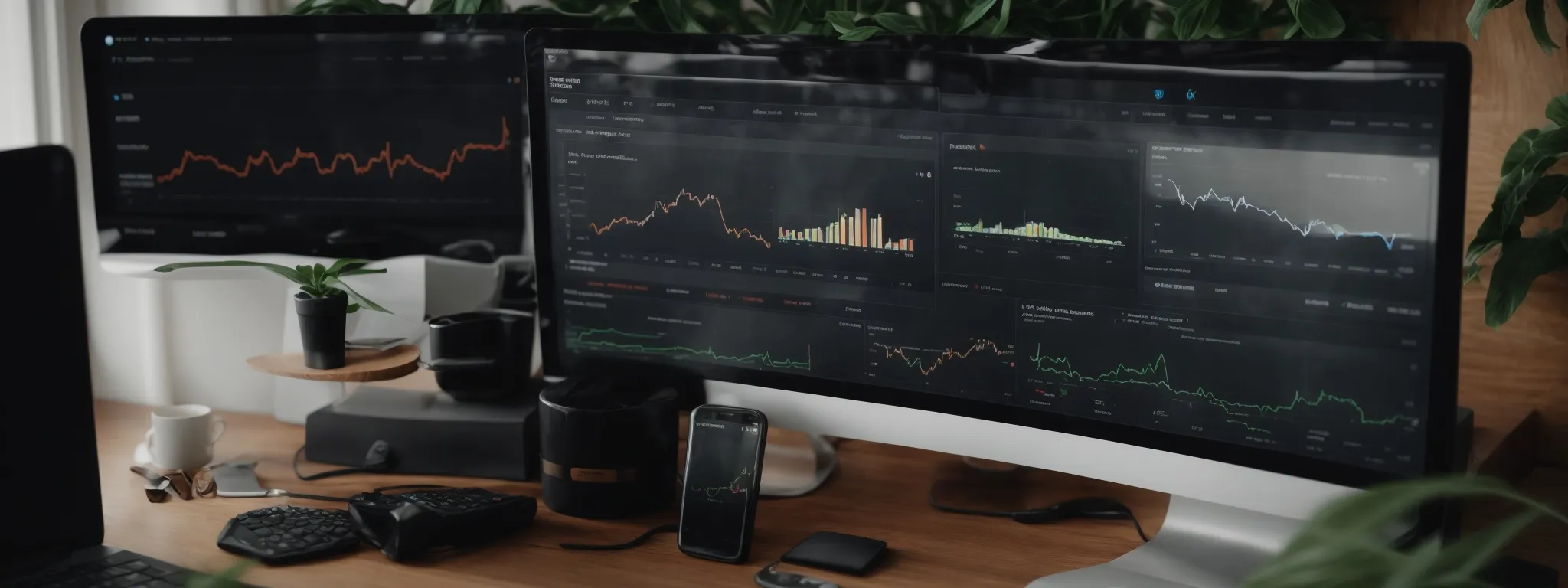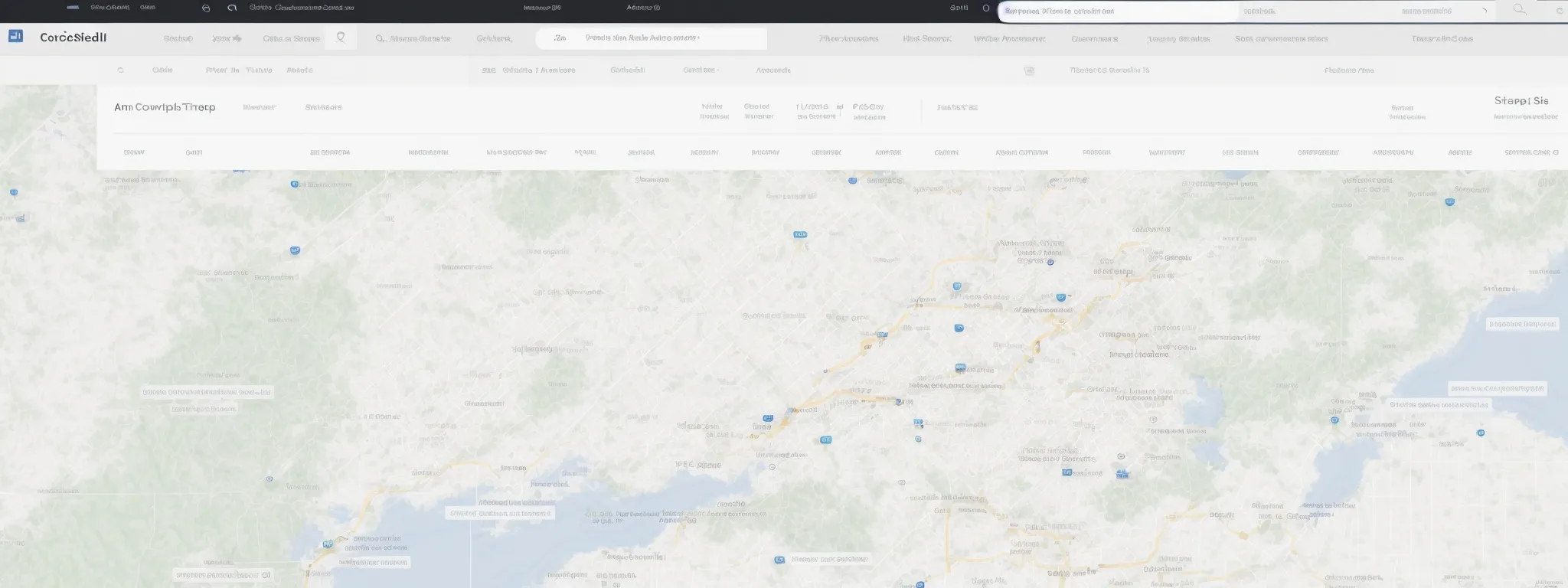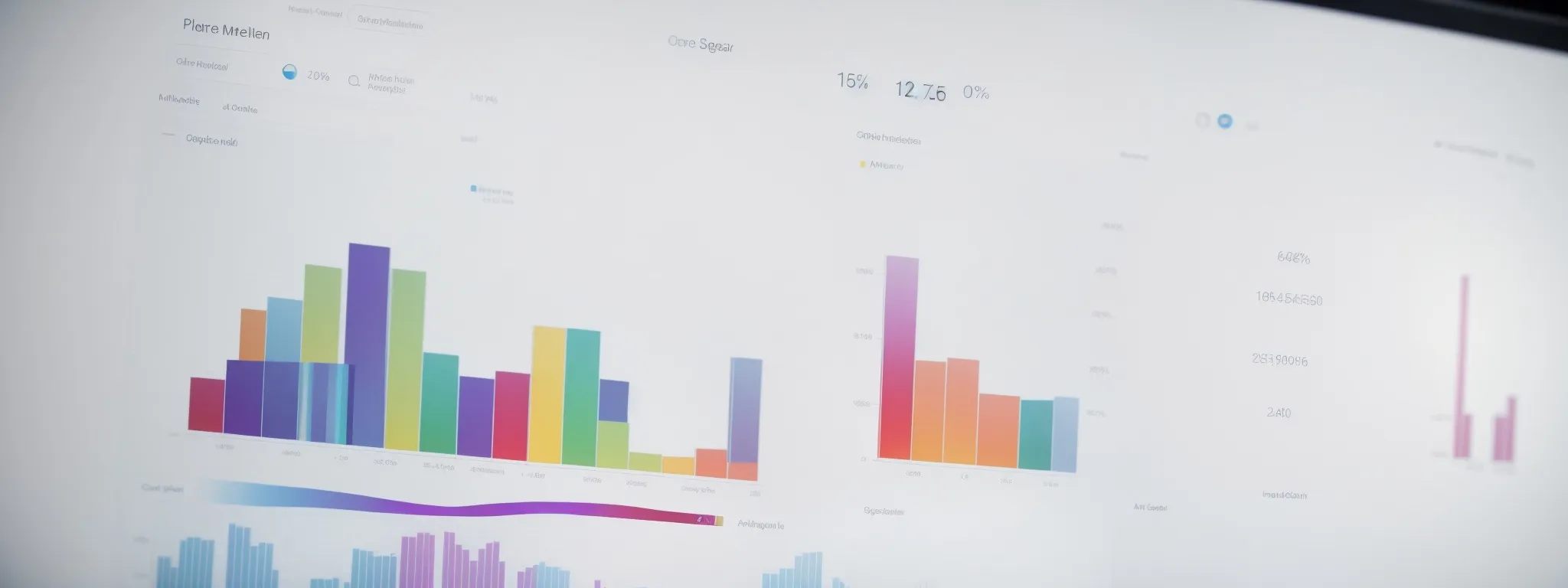Optimizing Shopify with Technical SEO
Mastering Technical SEO for Shopify Optimization Embarking on the journey of optimizing a Shopify store, website owners must recognize that masterful execution of Technical SEO is essential […]
Mastering Technical SEO for Shopify Optimization
Embarking on the journey of optimizing a Shopify store, website owners must recognize that masterful execution of Technical SEO is essential for climbing the ranks in search engine results.
With SearchAtlas SEO software at the helm, grasping the nuances of site architecture, the pivotal role of site speed, and the intricacies of metadata becomes not just manageable, but a strategic advantage.
Yet, success in SEO isn’t confined to the implementation alone; it necessitates the harmonious intertwining of best practices, such as avoiding duplicate content and fostering a user experience that pleases both human visitors and search engine crawlers.
Harnessing these elements skillfully can transform a Shopify site from obscurity to a staple in its target market’s online searches.
Keep reading to unveil advanced technical SEO strategies that will set your Shopify store apart from the competition.
Key Takeaways
- Optimizing Technical SEO Elements Like Site Speed and SSL Certification Is Essential for Shopify Stores
- Crafting a Clear Site Structure With Efficient URLs and XML Sitemaps Enhances Search Engine Indexing and User Navigation
- Implementing Structured Data Markup With Rich Snippets Increases Product Visibility and User Engagement
- Regular Auditing and Correction of SEO Elements Like Broken Links and Crawl Errors Improve a Site’s Performance and Rankings
- Staying Updated With SEO Algorithm Changes Helps Shopify Stores Maintain Competitive Search Engine Rankings
Understanding the Core Elements of Technical SEO

Technical SEO stands as the foundation upon which a successful Shopify store is built, dictating not only the accessibility and indexability by search engines but also contributing significantly to the user experience.
Starting with site architecture and progressing to more granular elements like XML sitemaps and URL structures, adept navigation through technical SEO realms is paramount.
Store owners must apprehend the linchpin features that cultivate search engine visibility, while also acknowledging how technical optimizations can propel a website’s rankings.
By Mastering These Essential Technical SEO Facets, Shopify merchants ensure their online presence is both robust and responsive, laying down the groundwork for enhanced search performance and ultimately, increased conversions.
Identify Critical Aspects of Technical SEO
An Effective Technical SEO Audit distinguishes a thriving Shopify store from one hindered by obscurity. Store owners must inspect and refine the site architecture, ensure a seamless navigation with an XML sitemap, and scrutinize URL structures to bolster search engine crawlers’ efficiency.
Within the algorithmic maze that search engines embody, adherence to best practices in site speed optimization and the inclusion of SSL certificates marks the difference between page one visibility and digital anonymity. SearchAtlas SEO software delivers a comprehensive guide, equipping merchants with the tools necessary for executing high-caliber technical adjustments that cater to the intricate demands of search engine algorithms.
Recognize the Impact of Technical SEO on Rankings
Elevating a Shopify store’s ranking in the Search Engine Results hinges on the meticulous improvement of technical SEO aspects. Enhancements to site structure and server optimizations not only facilitate the expedience of search engine crawlers, but also increase the indexation rate of pages, fostering greater visibility and higher rankings.
By employing a robust approach towards technical SEO, catered by premier services such as LinkGraph SEO services, store owners can engender significant strides in search performance. Variables such as page speed, mobile responsiveness, and secure data transmission via SSL certificates are leveraged to construct a fortified digital presence that search engines reward with superior ranking positions.
Elevate Your Shopify Store With SEO Fundamentals
LinkGraph SEO services provide Shopify store owners with a meticulous approach to on-page optimization, ensuring that each product’s presentation aligns with the best practices for search engine algorithms. Through strategic title tag implementation, thoughtful meta descriptions, and optimized alt text for images, these adjustments play a direct role in enhancing search engine results page standings.
Developing a holistic SEO content strategy is integral for a Shopify site’s ascension in SERPs, and LinkGraph’s expertise is pivotal for crafting content that resonates with both search engines and potential customers. Thorough keyword research, augmented by SearchAtlas SEO software, leads to a sophisticated integration of search query-driven content that drives organic traffic and engages the target audience effectively.
Setting Up Your Shopify Store for SEO Success

Ascendancy in the digital marketplace for a Shopify store owner hinges upon a deep-rooted command of Technical SEO.
A secure, easily navigable, and mobile-responsive website forms the bedrock of a thriving eCommerce platform.
Crafting a website structured for seamless user and search engine interaction is not an aesthetic choice but an imperative for capturing enhanced rankings.
Recognized as critical to this pursuit, LinkGraph SEO services delivers a strategic blueprint for Shopify entrepreneurs to establish a robust online presence, embracing the trichotomy of security, logical architecture, and mobile optimization.
It is this triad that accelerates a store’s trajectory towards SEO triumph, amalgamating technical prowess with user-centric design to conquer today’s competitive digital echelons.
Establish a Secure and Accessible Website
An unassailable Shopify store commences with the security that SSL certificates provide, ensuring customer data remains encrypted and trust is established from the first interaction. The accessible website permits ease of use for visitors regardless of device or browser, forming an inviting digital environment that search engines appreciate and reward.
Following secure protocols, LinkGraph SEO Services foreground the importance of accessibility, underpinned by responsive design and ADA compliance: ensuring that the storefront is open and welcoming to all potential shoppers. This attention to detail underscores an understanding that at the core of SEO efficiency is the ability for a website to cater to the broadest audience with seamless functionality:
- Integration of SSL certificates to encode data and affirm security trust signals
- Oversight of mobile responsiveness to guarantee a consistent user experience across devices
- Execution of ADA guidelines to enhance accessibility for all user demographics
Implement a Logical Structure for Your Online Store
Shopify store owners must prioritize a coherent site structure that naturally guides both users and search engine crawlers through their digital landscape: A clear hierarchy simplifies navigation, enhances understandability, and promotes a superior user experience. By structuring collections, categories, and product pages in an orderly fashion, owners create an intuitive pathway that connects consumers to the products they seek.
| Website Element | Purpose | Impact on SEO |
|---|---|---|
| Homepage | Introduce brand and featured products | Anchor point for site hierarchy and crawlability |
| Category Pages | Organize products under common themes | Enhances topical relevance and keyword targeting |
| Product Pages | Display individual products with detailed information | Opportunity for optimized content and conversion |
| Contact Page | Provide contact information and form | Increases trust and offers direct user engagement |
Incorporating a logical URL structure is likewise critical for optimizing Shopify stores, directly influencing their search engine rankings: URLs that are concise, descriptive, and include relevant keywords serve as signposts that aid search engines in understanding content relevance. This structured approach in crafting URLs streamlines the indexing process, thus bolstering the store’s search engine visibility and contributing to its SEO success.
Embrace a Mobile-First Approach for Better Rankings
In the contemporary digital landscape, a mobile-first approach is not just a trend but an essential strategy for achieving better rankings. As mobile browsers continue to outnumber desktop users, Google’s ranking algorithms prioritize mobile-friendly websites, making mobile optimization a critical component for SEO success.
Embarking on a mobile-first SEO strategy entails an unwavering commitment to responsive design, ensuring that visitors have an optimal experience regardless of the device in use. This commitment places Shopify store owners at an advantage in search rankings, as Google rewards sites that provide a seamless mobile user experience:
- Optimizing for mobile responsiveness to cater to the growing mobile user base
- Accelerating page speed for instant access on mobile networks
- Improving mobile UX to enhance engagement and reduce bounce rate
Optimize Your Shopify Site Speed for User Engagement

In today’s fast-paced digital age, the velocity at which a Shopify site loads can spell the difference between a sale and a missed opportunity.
Site speed has transcended mere convenience, establishing itself as a critical ranking factor, and an essential element of customer satisfaction.
Store owners must rigorously assess current page load times to identify bottlenecks, adopt robust techniques to expedite site performance, and continuously monitor post-optimization metrics to ensure persistent agility.
This analytical and proactive approach to speed optimization not only fortifies user engagement but also solidifies a store’s standing in the search engine results pages (SERPs), catalyzing the potential for revenue growth and customer loyalty.
Analyze Current Page Load Times
An incisive examination of page load times serves as the first step in Shopify site optimization, enabling store owners to pinpoint and address inefficiencies. Utilizing tools like Google’s PageSpeed Insights provides valuable data, including performance scores that spotlight immediate areas for improvement.
Store owners can leverage such insights to enact strategic changes that reduce load times, thereby achieving a critical advantage in user retention and search engine perception. Speed analysis equips merchants with the necessary empirical evidence to craft a faster, more responsive Shopify experience, aligned with user expectations and SEO benchmarks.
Leverage Techniques to Speed Up Your Shopify Site
Shopify store owners can ignite the performance of their sites by compressing images, which significantly diminishes page load times without sacrificing visual quality. In addition to image optimization, employing a Content Delivery Network streamlines content distribution, ensuring expedient delivery globally and maintaining a brisk website experience.
Another effective technique involves minimizing CSS and JavaScript files which reduces the amount of data transferred over the network. Streamlining these code elements not only accelerates site responsiveness but also enhances the overall functionality, contributing positively to a store’s user engagement and SEO rankings.
Monitor Performance Metrics Post-Optimization
Post-optimization, it is imperative for Shopify store owners to diligently monitor performance metrics, as this provides insight into the effectiveness of the implemented speed enhancements. Tools such as Google Analytics offer a granular view of user behavior patterns post-optimization, allowing store owners to gauge the precise impact of speed changes on user engagement and retention.
Continued analysis of metrics such as bounce rates, conversion rates, and average session duration post-optimization acts as a barometer for a website’s performance health. This persistent vigilance enables Shopify entrepreneurs to refine user experience proactively and ensure their online stores remain aligned with the dynamic expectations of search engines and users alike.
Ensuring Your Shopify Store Is Crawler-Friendly

Optimizing a Shopify store for both search engines and users entails ensuring it communicates effectively with search engine crawlers.
These digital explorers assess and interpret content, signaling what should be presented in search results.
To refine their interaction with your site, store owners must focus their efforts on creating an efficient XML Sitemap, judiciously managing their Robots.txt file to direct crawler activity, and fixing crawl errors to augment SEO performance.
These proactive steps help build a structured dialogue between your Shopify store and search algorithms, laying a foundation for enhanced visibility and traffic.
Create an Efficient XML Sitemap
An efficient XML Sitemap serves as a critical roadmap that guides search engine crawlers through the varied pages of a Shopify store, ensuring that every product, category, and significant piece of content is discovered and indexed. By maintaining a well-structured sitemap, LinkGraph SEO Services emphasizes the crucial role it plays in enhancing a site’s visibility and comprehensiveness in search results.
LinkGraph’s SEO services prioritize the creation and submission of meticulous XML Sitemaps to search engines, which can dramatically streamline the crawling process and facilitate quicker indexing of website changes or updates. This attention to detail not only solidifies a Shopify store’s online presence but also contributes to the rapid surfacing of its offerings in search engine results, thereby driving organic growth.
Manage Your Robots.txt File for Optimal Crawling
Proper management of a Shopify store’s Robots.txt file is a decisive step toward optimizing its interaction with search engine crawlers. It acts as a gatekeeper, instructing bots on the parts of the website they may access, which ensures that valuable crawl budget is utilized efficiently, focusing on pages that bolster the store’s SEO stature.
LinkGraph SEO services underscore the significance of a well-configured Robots.txt file, as a means to prevent search engines from indexing duplicate or irrelevant pages that can dilute the site’s ranking power. Their expertise ensures that each directive within the file is strategically set to maximize a store’s crawling and indexing potential, leading to a more robust search engine presence.
Fix Crawl Errors to Improve SEO Performance
Addressing crawl errors is an indispensable step in fortifying a Shopify store’s SEO performance. These errors, which can stymie search engine crawlers, lead to unindexed pages and compromised visibility: a predicament that store owners cannot afford in a fiercely competitive digital marketplace.
- Analyzing server error logs to pinpoint and rectify broken links or faulty redirects.
- Updating the XML Sitemap promptly post-error resolution to ensure search engines recognize the most current version of the site.
- Consistently auditing site health using SearchAtlas SEO software to maintain a pulse on the store’s accessibility for search engine crawlers.
LinkGraph SEO services grasp the importance of swift error correction, deploying expert tactics to restore and sustain flawless crawler accessibility. This proactive management guarantees a seamless path for search engines, laying the groundwork for improved rankings and organic traffic inflow.
Leveraging Structured Data for Enhanced Visibility

In an ever-evolving digital marketplace, Shopify store owners face the challenge of distinguishing their products within crowded search engine results pages.
The strategic integration of structured data provides a multifaceted solution, enabling merchants to amplify product features and brand attributes through rich snippets that capture shopper attention.
Mastering the nuanced craft of structured data implementation, from schema markup to rigorous testing and validation, equips ecommerce purveyors with a potent tool to enhance their offerings’ visibility and allure, thereby facilitating a notable lift in click-through rates and conversion potential.
Integrate Schema Markup for Rich Snippets
The integration of Schema markup can significantly enhance product visibility on Shopify stores by generating rich snippets in search results. By providing search engines with explicit metadata, merchants can ensure that their products are showcased with key details such as price, availability, and reviews, directly within SERPs.
This tactical use of structured data not only elevates the prominence of product listings but also aids in improving the click-through rates by offering potential customers a snapshot of what to expect on the product page:
- Incorporating ratings in search results to build trust and credibility.
- Displaying stock availability to encourage immediate action from interested buyers.
- Highlighting price points to attract price-conscious shoppers effectively.
Use Structured Data to Highlight Product Features
Utilization of structured data elevates product offerings on Shopify stores by enabling detailed feature displays in search results. When merchants harness this technique, specific product attributes such as color options, sizes, material composition, and unique selling points become more visible to search engines, enhancing the user’s search experience.
Structured data implementation is a strategic move that can articulate the diverse qualities of products, catering to a more informed and compelling browsing journey for customers. This meticulous detailing helps outline the narrative of each product, fostering informed purchasing decisions:
- Detailing product materials and care instructions to cater to quality-focused shoppers
- Outlining dimensions and size availability to aid users seeking specific fits
- Displaying color variations to attract visual appeal and match personal preferences
Test and Validate Your Structured Data Implementation
Shopify store owners embarking on the incorporation of structured data are advised to employ rigorous testing and validation processes. This critical analysis ensures that markup is applied correctly and is deciphered accurately by search engines, thus maximizing the chances of rich snippet displays in search results.
LinkGraph SEO services leverage compelling SEO tools to perform meticulous assessments, confirming that structured data markup adheres to standards and exhibits no errors or warnings that could hinder visibility. This detailed validation is essential, as it verifies the precision of schema implementations, securing the integrity of a Shopify store’s search performance.
Mastering Shopify’s URL Structure and Redirects

Embarking on the journey of optimizing a Shopify store for superior search engine rankings necessitates a meticulous approach to URL management.
It is essential for merchants to establish URLs abundant in relevant keywords, artfully manage redirects to sidestep the detriment of broken links, and steer clear of common pitfalls that can negatively impact a site’s SEO.
By refining these elements, store proprietors can secure a competitive edge, ensuring that their online storefront not only communicates succinctly with search engines but also fosters an environment conducive to organic traffic growth and search prominence.
Establish Keyword-Enriched URLs
In the realm of Shopify optimization, establishing URLs enriched with relevant keywords stands at the core of enhancing search engine understanding and user experience. LinkGraph SEO services recognize that well-crafted URLs serve as potent signals to search engines, illuminating the content within and elevating a site’s relevance for specific search queries.
Meticulous Construction of URLs with targeted keywords fosters a clear narrative for both the search engine crawlers and the prospective shoppers navigating the site: Integrating terms directly tied to the product or category at hand enhances discoverability and aligns with user search intent. This strategic alignment is critical for attaining high search engine rankings and drawing qualified traffic:
- For product pages, incorporate model numbers, brand, and product-specific features.
- In category URLs, weave in overarching keywords that embody the collection’s theme.
- Ensure consistency across URLs to bolster site architecture and crawl efficiency.
Manage Redirects to Prevent Broken Links
Within the dynamic landscape of a Shopify store’s website, meticulous management of redirects plays a decisive role in safeguarding against the SEO pitfalls of broken links. LinkGraph SEO services excel at orchestrating redirect strategies that seamlessly guide users and search engine crawlers away from outdated URLs to the relevant, updated content, reinforcing the credibility and navigability of the online store.
Redirects, when strategically implemented, serve as a conduit for preserving the user experience and maintaining link equity, critical for sustaining a website’s search engine authority. LinkGraph’s Technical Expertise ensures that all redirects, whether temporary or permanent, are executed with precision, minimizing the risk of 404 errors and sustaining a fluid, intuitive user journey throughout the ecommerce site.
Avoid Common URL Pitfalls for Improved SEO
Awareness and avoidance of common URL pitfalls is paramount for maintaining the SEO integrity of a Shopify store. LinkGraph SEO Services navigates the complex world of URL optimization, ensuring that merchants eschew practices such as using excessive parameters or overly complex URL strings which can confuse search engines and users alike.
Robust URL structures championed by LinkGraph SEO services optimize search engine crawling and user navigation by sidestepping pitfalls such as URL duplication and deep nesting of pages. This astute approach to URL management aids in preserving a clean, organized framework for the Shopify store, which search engines recognize and reward with better rankings.
Tackling Duplicate Content Issues in Shopify

In the quest to elevate a Shopify store’s search engine performance, grappling with duplicate content emerges as a crucial obstacle.
Search engines, like finely tuned instruments, resonate poorly with redundancy, often penalizing websites that house identical or strikingly similar content.
Store owners stand at the precipice, where distinguishing their content becomes not only a matter of originality but also a metric of SEO success.
Tackling this issue requires a blend of strategic implementations: understanding the origins of duplicate content, applying canonical tags to assert authority over preferred pages, and weaving a tapestry of unique, compelling content across the Shopify site, all of which are essential to the intricate tapestry of technical SEO mastery.
Understand the Roots of Duplicate Content
Understanding the origins of duplicate content within a Shopify store is vital for merchants striving to optimize their search engine standings. The issue frequently stems from inherent platform functionalities, such as product variants and pagination, which inadvertently create similar pages that dilute a site’s SEO efficacy.
LinkGraph SEO services can meticulously pinpoint these common areas where replicative elements might proliferate, employing strategic measures to diminish their impact. With expert insight, store owners are able to navigate Shopify’s complexities, ensuring each product listing is distinguished and search-engine friendly.
Implement Canonical Tags to Signal Preferred Pages
Shopify store owners enhance their site’s SEO by implementing canonical tags to clarify which pages search engines should prioritize. This practice effectively addresses the issue of duplicate content by pinpointing the original page and signaling it as the authoritative source, thus streamlining search engine indexing and preserving the site’s link equity.
With LinkGraph SEO services, canonicalization becomes a critical element of a comprehensive SEO strategy, allowing for the consolidation of ranking signals and preventing the split of valuable search engine traffic across multiple, identical pages. This meticulous application ensures that the store’s content hierarchy remains intact and that the preferred pages gain prominence in search engine results.
Craft Unique Content Across Your Shopify Site
Crafting Unique Content Across a Shopify Site is a pivotal process that safeguards the uniqueness of the store’s narrative and bolsters its SEO profile. It involves generating product descriptions, blog posts, and other web copy that is not only engaging but also distinct from competing pages on the internet.
LinkGraph SEO services empower store owners to weave a distinctive content tapestry, combining creativity with SEO acumen to enhance product appeal and prevent search engine penalties associated with duplicated text. Store narratives and product stories are carefully curated to captivate the audience and elevate the brand:
| Content Type | Description | SEO Benefit |
|---|---|---|
| Product Descriptions | Custom-crafted, feature-rich narratives tailored to each product. | Boosts product page relevancy for target keywords, enhancing visibility. |
| Blog Posts | Informative and topical articles that connect with the store’s audience. | Engages customers and supports organic traffic growth through valuable content. |
| SEO Copywriting | Persuasive and optimized text focused on conversions and keyword inclusion. | Improves SERP positioning and encourages customer action. |
Advanced Technical SEO Strategies for Shopify

As Shopify merchants pursue optimization, embracing a selection of advanced technical SEO strategies can elevate their online store to unprecedented success.
Harnessing international SEO unlocks the potential for global reach, introducing products to a diverse, international audience with tailored content and domain structures.
The Implementation of Progressive Web Apps (PWAs) offers a fusion of the best features from web and mobile experiences, directly impacting engagement and traction by enhancing load times, reliability, and user retention.
Moreover, staying abreast of the latest SEO algorithm changes ensures that Shopify stores not only remain compliant but also take advantage of emerging SEO trends, securing their competitive edge in a fluid digital landscape.
These cutting-edge technical strategies are fundamental for merchants committed to refining their storefront’s prowess and amplifying their market dominance.
Harness International SEO for Global Reach
International SEO stands as a linchpin for Shopify store owners intent on expanding their brand’s footprint across the globe. It requires an acute Understanding of Regional Search Engine Behaviors, language nuances, and cultural preferences to capture a wide and culturally diverse audience effectively.
Proper Implementation of Hreflang Tags and localized content ensures that the right version of the site is presented to users from various countries, enhancing the user experience and search accuracy. This strategic optimization caters to specific market segments, fostering a sense of relevance and familiarity for international consumers:
| Strategy Component | Description | Impact on International SEO |
|---|---|---|
| Hreflang Tags | Annotations in the code that communicate language and regional targeting to search engines. | Directs international users to the content version tailored to their region, improving search relevance. |
| Localized Content | Content that is customized to align with cultural norms, currencies, and local idiomatic expressions. | Resonates with the target audience, establishing credibility and enhancing engagement. |
Tap Into the Power of Progressive Web Apps (PWAs)
Progressive Web Apps (PWAs) represent a sophisticated fusion of web and mobile app technology, enabling Shopify merchants to craft immersive, app-like experiences within the browser. This modern approach to web development holds the promise of faster load times, offline functionality, and device hardware integration, which can substantially elevate user engagement and retention on Shopify stores.
By Integrating PWAs, Shopify proprietors unlock new possibilities for performance optimization, delivering content instantly and reliably, even in uncertain network conditions. The enhanced capabilities of PWAs, from push notifications to home screen access, provide a powerful platform upon which store owners can build a seamless, engaging shopping experience that rivals native applications.
Stay Updated With the Latest SEO Algorithm Changes
To thrive in the fast-paced realm of eCommerce, Staying Informed With the Latest SEO Algorithm Changes is not just beneficial; it’s imperative for Shopify store prosperity. With search engines perpetually refining their algorithms, LinkGraph facilitates merchants with up-to-date SEO insights that align with the most current algorithm adaptations.
By leveraging LinkGraph’s SEO services and advanced SearchAtlas SEO software, store owners can adeptly respond to algorithmic shifts, ensuring their optimization tactics remain efficacious and their Shopify stores retain prominence in search rankings. This proactive vigilance fosters an agile storefront that adapts to the ever-evolving SEO landscape:
| Algorithm Change | SEO Aspect Affected | Required Action |
|---|---|---|
| Core Update | Overall site quality and content relevance | Review and enhance content quality; ensure comprehensive topic coverage |
| Page Experience Update | Usability metrics like site speed and mobile-friendliness | Optimize website performance across devices; improve UX factors |
| Link Analysis Update | Quality and relevance of backlinks | Conduct thorough backlink audits; refine link building practices |
Conclusion
Mastering technical SEO is vital for optimizing a Shopify store and cannot be overlooked.
With the correct strategic approach to site architecture, including user-friendly URL structures, a well-managed XML Sitemap, and efficient Robots.txt files, a store can achieve high search engine visibility and superior rankings.
Incorporating SSL certificates, page speed optimization, and mobile responsiveness not only improves user experience but also boosts search engine ranking positions.
Further, handling duplicate content with canonical tags and creating unique, engaging content are critical for maintaining SEO integrity.
Advanced strategies like international SEO, Progressive Web Apps, and staying updated with SEO algorithm changes complement these efforts, providing a comprehensive technical SEO blueprint that ensures a Shopify store’s success in the competitive digital marketplace.














































































